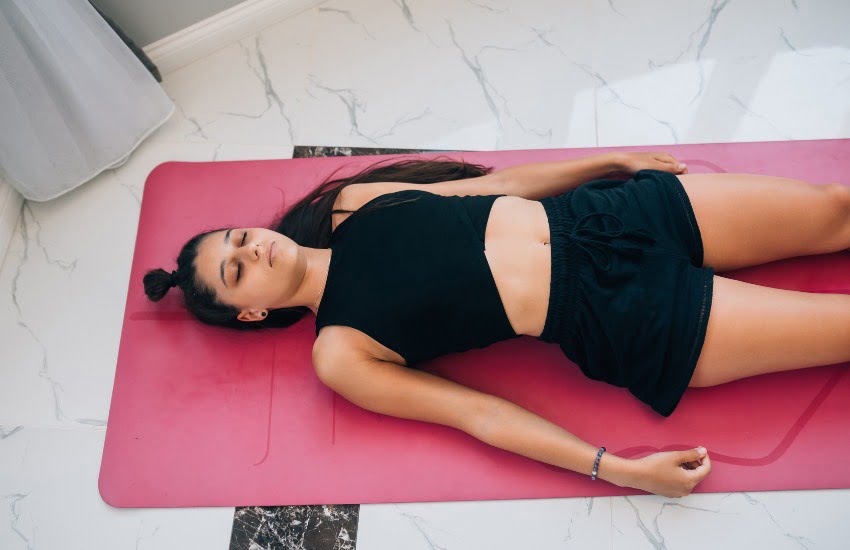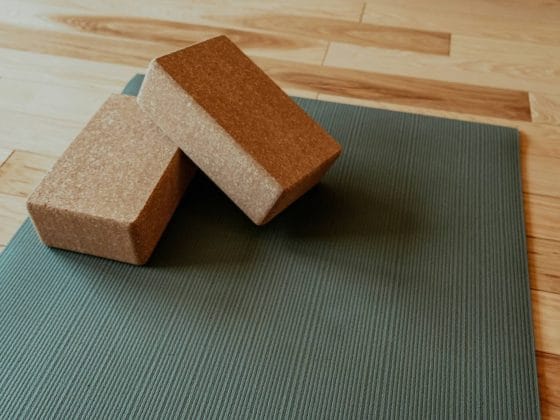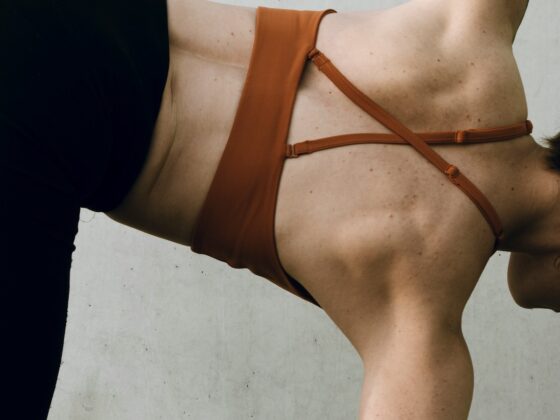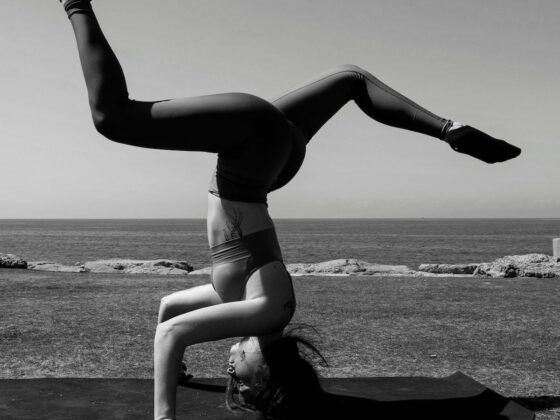In the hustle and bustle of our fast-paced lives, finding moments of tranquillity becomes increasingly important for our overall well-being. As a beginner on the path to holistic health, I stumbled upon restorative yoga, a gentle and nourishing practice that has since become my sanctuary of peace. In this blog post, I’ll offer a comprehensive guide for beginners looking to explore the transformative world of restorative yoga.
Restorative Yoga: A Healing Haven
Restorative yoga is a therapeutic practice that focuses on relaxation and rejuvenation. It involves a series of supported poses, using props like blankets, bolsters, and blocks to encourage deep release and restoration. Unlike more dynamic forms of yoga, restorative yoga is slow-paced, allowing practitioners to linger in each pose for extended periods – fostering a profound sense of calm.
Getting Started: Setting the Scene
Creating the right environment is crucial for a successful restorative yoga experience. Find a quiet and comfortable space where you won’t be disturbed. Dim the lights or use candles to create a soothing atmosphere. Gather your props – a mat, bolster, blankets, blocks, and an eye pillow if you have one. If you don’t have any of these, that’s okay. When I first started, I didn’t either. Just use what you have, while focusing on the following foundational principles:
1. Breath Awareness
The foundation of restorative yoga lies in conscious breathing. Begin your practice with a few moments of focused breath awareness. Sit or lie down comfortably, close your eyes, and take slow, deep breaths. Feel the breath moving in and out, bringing attention to the present moment. You can play around with different breathing techniques – I personally love box breathing and focusing on long exhales to ground myself.
2. Gentle Warm-Up
Start with a gentle warm-up to prepare your body for the upcoming restorative poses. Simple stretches and movements, such as neck rolls, shoulder shrugs, and gentle twists, help release tension and increase body awareness. You want to move as slow and intentional as possible. The idea is to get yourself in a calm (almost sleepy) state.
3. Basic Restorative Poses
Now, let’s delve into some foundational restorative poses. One of the most accessible poses for beginners is “Legs Up the Wall”. Sit sideways against a wall, swing your legs up, and rest your heels against the wall. Place a bolster or folded blanket under your hips for support. Close your eyes and let gravity gently stretch your hamstrings and release tension in your lower back.
Move into Supported Child’s Pose by placing a bolster or a stack of blankets between your thighs. Sit back on your heels, extend your arms forward, and rest your forehead on the support. This pose provides a gentle stretch for the back, hips, and shoulders while promoting a sense of surrender.
To open your heart and chest, try Supported Fish Pose. Place a bolster horizontally along your spine and lie back over it. Ensure the bolster supports your entire spine, allowing your chest to gently open. Relax your arms by your sides or place them in a comfortable position. This pose encourages deep relaxation and can alleviate tension in the chest and shoulders.
For a restorative hip opener, practice Reclining Bound Angle Pose. Sit with the soles of your feet together and let your knees fall open to the sides. Place a bolster or pillows under your knees for support. Lie back and relax, feeling the gentle stretch in your inner thighs and hips.
No restorative yoga practice is complete without a blissful Savasana. Extend your legs, relax your arms by your sides, and close your eyes. Place a folded blanket under your head for support, allowing your entire body to surrender to the ground. Focus on your breath and let go of any lingering tension.

The Deeper Connection: Mind-Body Harmony
Restorative yoga is so much more than a physical practice. The intentional combination of breath, movement, and stillness cultivates a deeper connection with oneself. To tap into the inner-healing benefits of restorative yoga, try the following:
1. Mindful Meditation
Complement your restorative yoga practice with mindful meditation. After your asana sequence, find a comfortable seated position. Close your eyes, bring your attention to your breath, and let your thoughts gently pass like clouds in the sky. Mindful meditation enhances the calming effects of restorative yoga, promoting mental clarity and emotional well-being. I also love putting a guided meditation on in the background while I move through my restorative poses. Remember this is your journey. You can do it in whichever way suits you.
2. Cultivating Gratitude
Incorporate gratitude into your restorative yoga practice. Before or after each session, take a moment to reflect on the positive aspects of your life. Cultivating gratitude can shift your perspective, bringing a sense of joy and contentment that extends beyond the mat. When I take a moment to think about the things in my life that I am grateful for, I feel lighter and more energized – as though I intentionally left behind any negative energy.
3. Journaling Your Journey
Consider keeping a yoga journal to document your experiences and insights. Throughout my journey, I’ve had interesting realisations while practicing restorative yoga. Reflect on how each session makes you feel physically, mentally, and emotionally. Tracking your journey provides a valuable record of your progress and allows you to observe the positive changes that unfold over time.
Overcoming Challenges: Patience and Persistence
As with any new practice, restorative yoga may come with its challenges. Impatience and frustration may arise as you navigate unfamiliar poses or encounter resistance in your body. I know that when I started, I felt uncomfortable when I had to relax completely. It’s like my body was so used to survival mode, that relaxation didn’t feel safe. Know that everything you’re feeling is perfectly normal and use it as an opportunity to learn about how your body communicates to you. If you’re not sure whether what you’re going through is normal – seek help from an experienced professional or find a supportive community.

A Lifestyle Shift: Taking Restorative Yoga Off the Mat
Personally, I don’t like doing anything that doesn’t holistically benefit all areas of my life. Restorative yoga has a way of making you feel calmer and more grounded, which has hugely improved how I show up in my day-to-day life. Some of the benefits I noticed was:
1. Mindful Eating
Restorative yoga helps you to gain self-awareness and that includes awareness about your eating habits. I noticed that I rushed through meals, often not chewing properly or taking the time to appreciate my meal. When I stopped to slow down, I experienced huge improvements in my digestion, my food choices, and my ability to be present during meals.
2. Stress Management Techniques
Restorative yoga helped me to release a lot of pent up stress and emotions from my body, which helped me to become more calm and in control of chaotic situations. I find it much easier to remain centred, to listen without reacting, and to take life’s challenges in my stride.
3. Prioritizing Self-Care
I’ve always loved self-care – think bubble baths, at-home spa treatments, and watching a movie while munching on my favourite snacks. When I started practicing restorative yoga, however, I noticed that I became more in tune with my intuition. It made it much easier to gauge where I had to be more strict with boundaries and which situations or people drained my energy. I learned that self-care is so much more than feeling bougee. If you struggle to connect to that little voice inside of you – try restorative yoga.
Closing Thoughts
In the tranquil haven of restorative yoga, I discovered not only physical relaxation but also a deep connection with my inner self. It’s a practice that extends beyond the mat, influencing how I navigate the challenges of everyday life. So, take a deep breath, embrace the stillness, and let restorative yoga guide you on a journey of self-discovery and serenity.
As you embark on this transformative path, remember that the essence of restorative yoga lies not only in the poses but in the mindful and nurturing approach you bring to each moment. May your journey be filled with serenity, self-love, and the profound joy of discovering the healing power within.



